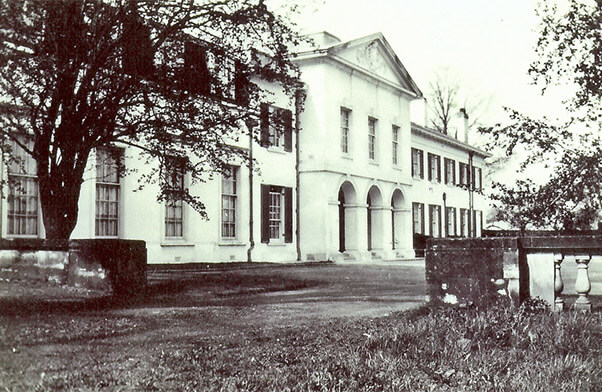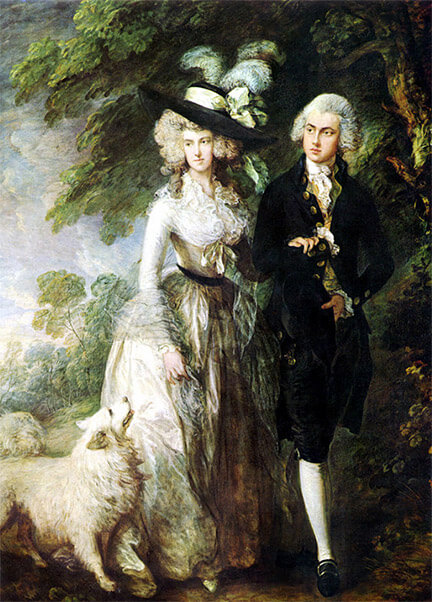The colourful history of our Oaklands House nursing home
If you have visited our Oaklands House nursing home in Allington Lane, Southampton, you will know that it is still fortunate to be surrounded by open fields, reminiscent of its rural past. Centuries ago, the Oaklands site was one of several thriving farms in the area, occupied by tenant farmers. In 1787, the entire area was called the Townhill Estate with all 4.5 thousand acres owned by Nathaniel Middleton who made his fortune in the service of the East India Company – a fortune which enabled him to purchase this huge estate in 1787 until his death in 1807.
After Middleton’s death, his home (Townhill Park House, now The Gregg School) and wider estate was sold to William Hallett (for a reported £98,000, which equates to around £6 million today) who demolished parts of it to transport to another of his properties, while other parts of the estate were sold off. A decision that was likely to me made to help fund his suspected gambling habit! Hallett soon decided to live elsewhere on his vast estate, that place being the former ‘Oaklands’ site, off Allington Lane. He took over the rundown farmhouse, and rebuilt it, sometime between 1810 and 1820. Hallett called his new, more modest home ‘Candys’ and later referred to it as his main home in his will of 1842. He stated that he had spent over £2,000 (£100,000 today) on the rebuilding and creation of attractive gardens. The name ‘Candys’ was probably named after the Candys family, tenant farmers, who had cultivated the area for centuries.
William Hallett and his first wife Elizabeth (who died in 1833) lived here, rather than Townhill Park House, until his death in 1842.

During those intervening years he made several influential friends. After the death of his first wife, Hallett soon remarried Mary-Jane, much younger than himself who was not well-off financially. He continued selling off parts of the Townhill Estate until it was much reduced in size.
The 1851 census records revealed that his son, another William, described as “a barrister and farmer” took over Candy’s with his wife and family. This William Hallett Jnr. died in 1863 aged 77 years and was buried in St. James’ churchyard, West End. Many have questioned why William Hallett Jnr was not mentioned in his father’s will – an unsolved curiosity that remains to this day. By the 1871 census, however, ‘Candy’s’ had been renamed ‘Bluelands’, possibly because certain plots of land nearby had long been named ‘Blueland Field’. Interesting to note that George Hallett, aged 24 years, was described as a mere “agricultural labourer”.
In 1874, in an auction of Great Allington Manor Estate, Lot 2, ‘Bluelands’ was included as “a convenient residence or hunting box (base)” with “good stabling, gardens and pleasure grounds amounting to 13 acres”. Later, in 1878, it was advertised again, “to be let … containing 4 sitting rooms … 6 bedrooms … a coach house for 5 horses, cowhouse, piggery, walled kitchen garden etc.”
Thereafter, ‘Bluelands’ was occupied by a series of tenants, mainly retired or active Royal Naval officers over a period of many years, including RN Comdr. Arthur Cowburn, RN Capt. Andrew, and RN Lieut. Paul H. Millar. The name of Bluelands House or Farm had changed to ‘Oaklands’ by the 1880’s when it may have been rebuilt. It was ‘uninhabited’ in the 1901 census.
The records of Haines Brothers Builders showed that yet another RN officer, Captain Philip C. Pearson was living in ‘Oaklands House’ in 1920 until his death in 1933. His widow, Mrs P. Pearson continued living at Oaklands for many years and was well known in the local area for her good works including the opening of the newly built Fire Station in 1940. She may even have witnessed the WW2 plane crash on 26th August that year whereby a British Blenheim bomber L8870, having returned from a night-time sortie to France, hit a local barrage balloon cable and met its fate in the field adjoining Oaklands. A clump of brambles still marks the spot where the crew died.
A relative, Cecil Pearson, occupied ‘Oaklands House’ in the 1960’s and Ian Caldwell followed.
After which, Oaklands House Nursing Home took over the old building with a large extension added a few years prior to the 2020 pandemic.

Sources used for this article: Westender -The Newsletter of the West End Local History Society. July-August 2018. Vol 11, No. 6.



